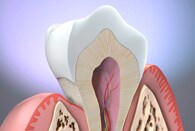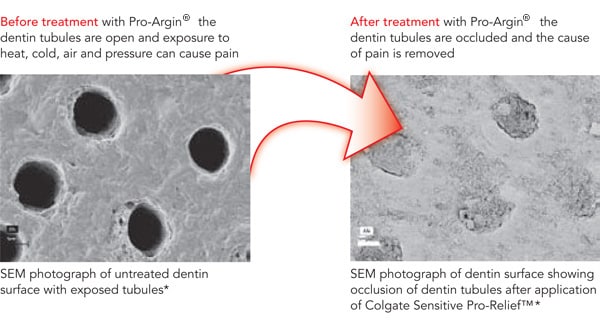Hypersensitivity - A source of stress in the dental practice
Tooth sensitivity affects many patients
- Up to 57% of adults experience tooth sensitivity at some point1
- Patients between the ages of 20 and 50 are most affected1
Exposed dentine is the main cause of dentine hypersensitivity
- Gingival recession or enamel abrasion are two key ways by which dentine is exposed in the cervical region of a tooth
- External stimuli such as cold, heat, acid or pressure can cause fluid movements in the dentine tubules, causing pulp nerve stimulation and can be perceived as pain or discomfort2, 3
Dentine hypersensitivity during dental treatment is a widespread problem
- Data from the UK reveals about 20% of the patients suffer from dentine hypersensitivity during or after professional scaling4
Patients discomfort during dental procedures can create a stressful environment
- In severe cases, the use of local anaesthesia may be required
- Dentine hypersensitivity may lead patients to avoid dental visits, negatively impacting their overall oral health
1 Addy M. Dentine hypersensitivity: new perspectives on an old problem. Int Dent J 2002; 52(Suppl 5): 367-375.
2 Brännström M: A hydrodynamic mechanism in the transmission of pain-produced stimuli through the dentine. In: Sensory mechanisms in dentine. Anderson DJ. ed. pp73-79, Pergamon Press, London, 1963.
3 Brännström M, Johnson G: Movements of the dentine and pulp liquids on application of thermal stimuli. Acta Odontol Scand 1970; 28: 59-65.
4 Market research data on file; Colgate-Palmolive, June 2008.




